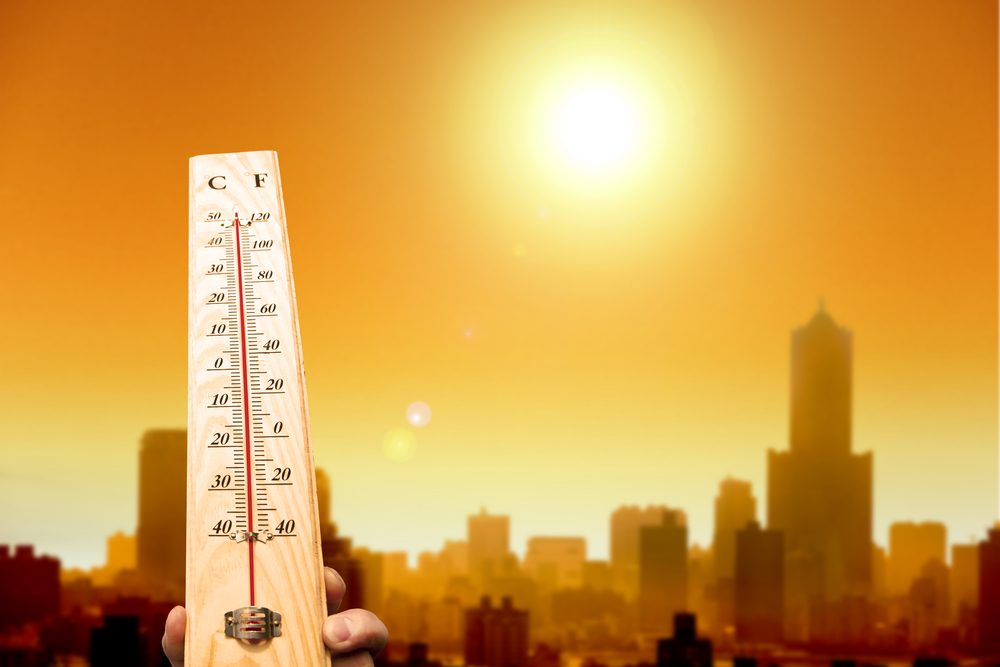SUMMARY
This is AI generated summarization, which may have errors. For context, always refer to the full article.

In May 2015, a heatwave in India killed more than 2,000 people. In June, another one struck Pakistan and killed more than a thousand. This month, the United Kingdom is the next victim.
Heatwave happens when the temperature increases by approximately 3 degrees Celsius higher than the daily average temperature in the area, combined with high humidity and low air pressure. It is one type of extreme weather events reported to increase in frequency, duration and severity due to climate change. (READ: Countries must deal with health risks of heatwaves – UN)
According to the Climate Council, heatwaves cover on average 0.1%–0.2% of the earth’s surface at any given time from 1951 to 1980. From 1981 to 2010, however, this has increased to 10% of the planet. This means a heatwave has been 50–100 times more likely to occur over the last three decades.
The human impact
As the Earth heats up, so do we. Heatwaves cause human deaths via hyperthermia which causes the denaturation of proteins, destabilization of phospholipids and lipoproteins, and liquefaction of membrane lipids – leading to cardiovascular collapse, and multi-organ failure.
The elderly, chronically ill, and very young are more prone due to the decreased ability of their bodies to adapt to the sudden increase in temperature. This is observed to more likely happen in cities where increasing concrete and decreasing greenery cause the Urban Heat Island effect.
Perils of a warmer world
Aside from causing illness and death, heatwaves also cause physical and economic damage such as crops dying, roads melting, water lines bursting, and power transformers detonating. As varied and devastating as the effects of heatwaves are though, most strategies promoted alongside it are short-term measures only. Public reminders include drinking lots of water, staying under a shaded and/or air-conditioned area, wearing loose light-colored clothes, and minimizing physical activity.
In some countries, public pools and cooling centers have been built. However, these band-aid solutions are not enough, for the tragedy catches us on a vicious cycle. As people consume water to avoid dehydration, there would be less amount of water left to absorb the heat from the atmosphere.
As humans also increase their use of air-conditioners or electric fans to cool themselves, greenhouse gas emissions would increase thereby further increasing global temperature. Immediate measures for adapting to heatwaves aggravate the causation of heatwaves in the first place. This catastrophe is even worse in poverty-stricken areas. With inadequate health systems and looming water scarcity and energy crises, a seemingly preventable illness becomes deadly.
This shows us then that heatwaves, as well as other environmental issues we have nowadays, require systemic and systematic thinking.

In the 1970’s, James Lovelock formulated the “Gaia Hypothesis” also referred to as Geophysiology or Earth System Science. This asserts that the organic and inorganic components of the Earth interact to make it into a single, self-regulating, living system.
One example of a phenomenon explained under this hypothesis is cloud formation over open oceans. It is now known that this is due to oceanic algae excreting large sulfur molecules that become the condensation nuclei for raindrops. With this, sulfur is returned to terrestrial ecosystems while the Earth’s temperature is being regulated. How nice it would be if we could understand all phenomena on Earth this way!
It is high time that experts from different disciplines collaborate in understanding the complex systems in our biosphere – ecologists with engineers, physicists with physicians, and so on. This way, we minimize the tragic possibility that the solutions we are proposing are actually creating new problems.
Heatwaves and climate action
In the past weeks, there has been increasing support for the battle against climate change – from the G7’s goal of divesting from fossil fuels, the Pope’s “Laudato Si” Encyclical, to the Dutch people winning a landmark case compelling their government to pledge a higher target of carbon cutting. (READ: Dutch court orders state to slash greenhouse emissions)
However, these preventive measures may not be enough. We are seeing the impact of climate change evolving fast already. According to a study by Meehl and Tebaldi, it is predicted that heatwaves will increase by 25%–30%, with tropical regions being affected worse.
Slowly and silently, heatwaves are killing more people than other natural disasters. Greater foresight is needed to tackle it now because an ounce of prevention is more meaningful than a pound of cure.
The Indian Meteorological Department reports that they were expecting sea breezes, based on atmospheric circulation patterns, to help alleviate the heat but these did not happen. They could not explain why. Maybe this shows that we have pushed the Earth beyond its ability to self-recuperate. We are near a state of emergency now and the patient is the planet.
Ever since, we have been biased for ourselves, for our own survival. This time, we need to be biased for the Earth. We need to sustain our one and only Earth if we want it to be able to sustain us back.
Ironically, this sense of urgency could not be felt in our country, the Philippines – a tropical nation rated to be one of the most vulnerable to climate change-induced disasters. The Private Hospital Association of the Philippines reported that approximately 5-10 Filipinos are affected by heat-related illnesses daily. Still, there is not much action done on this apart from warnings and tips from the Department of Health.
Worse, the government is going backwards in solving the nation’s environmental woes. New coal-fired power plants are continually being put up in Mindanao despite the country’s geographical advantage for renewable energy. Add to this the DENR’s failed P7.2-billion National Greening Program, the lenient take on mining in indigenous land, the passivity on trash piling up as mountains, and many other problems.
The United Nations acclaimed our climate change laws to be some of the best in the world but what good are these when they are stuck on paper and never realized. Numerous environmental groups in the country have sparked action via various movements. How much better would it be if their bottom-up volunteerism is complimented by an equally strong top-down political will?
Our efforts are small if they stand alone, but when bound together, we can save ourselves from the perils of a warmer world. – Rappler.com
Angeli Guadalupe is a medical doctor from the University of the Philippines who advocates optimum environmental health as an undeniable determinant to human health. She is currently studying under the University of Tokyo’s Graduate Program on Sustainability Science-Global Leadership Initiative, where her research interests include disaster mental health and planetary medicine. She blogs during her free time at planetisourpatient.tumblr.com.
Add a comment
How does this make you feel?
There are no comments yet. Add your comment to start the conversation.